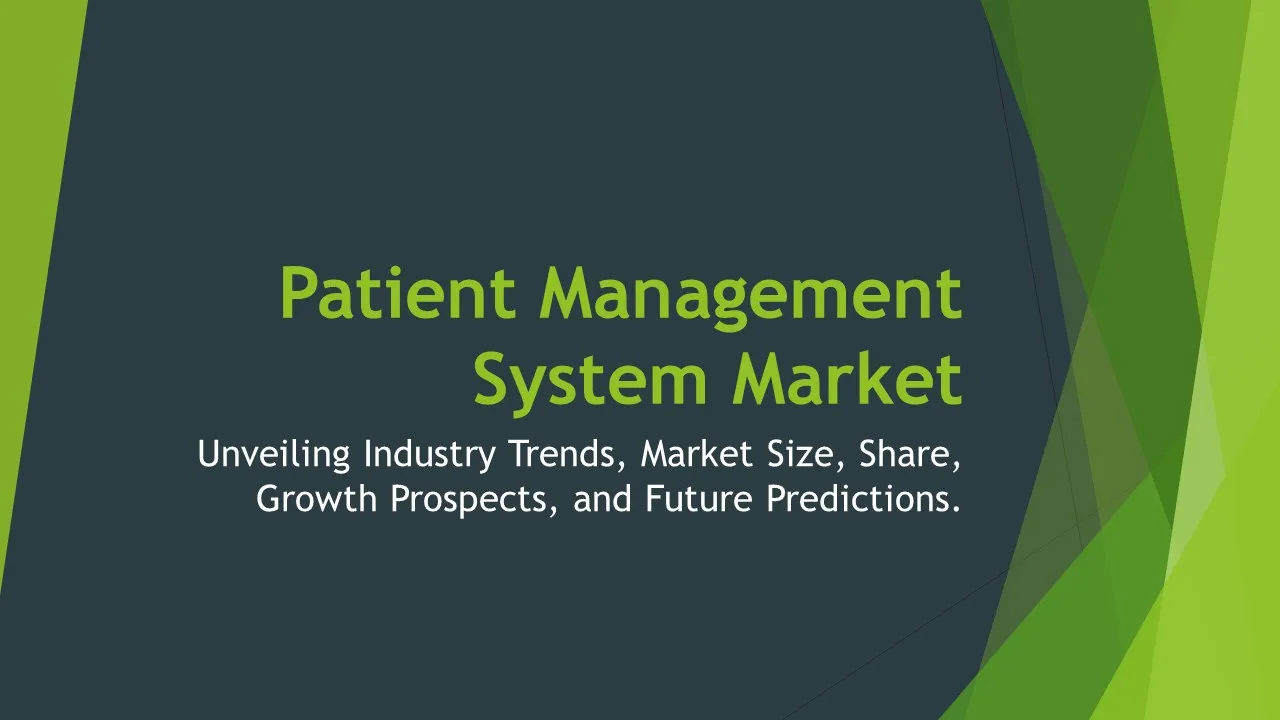Digital Audio Advertising Software
Digital Audio Advertising Software Market Segments - by Product Type (Programmatic Advertising Software, Ad Serving Software, Analytics and Reporting Software, Ad Exchange Software, and Audio Creative Tools), Application (Brand Awareness, Direct Response, Lead Generation, Customer Engagement, and Others), Distribution Channel (Direct Sales, Online Advertising Platforms, Ad Agencies, Audio Streaming Platforms, and Others), Region (North America, Europe, Asia Pacific, Latin America, and Middle East & Africa) - Global Industry Analysis, Growth, Share, Size, Trends, and Forecast 2025-2035
- Report Preview
- Table Of Content
- Segments
- Methodology
Digital Audio Advertising Software Market Outlook
The global Digital Audio Advertising Software market is projected to reach approximately USD 6 billion by 2035, growing at a CAGR of around 15% from 2025 to 2035. This market growth is primarily driven by the increasing penetration of smartphones and internet connectivity, which have significantly boosted the consumption of digital audio content. Furthermore, the rise of streaming platforms and the growing reliance on targeted advertising strategies have also contributed to this upward trajectory. The shift from traditional to digital media is leading advertisers to allocate a larger share of their budgets to digital audio advertising, thus enhancing the market's potential. Additionally, the integration of advanced technologies such as AI and machine learning for data analytics is facilitating more efficient ad targeting and personalization, further propelling market growth.
Growth Factor of the Market
One of the key growth factors for the Digital Audio Advertising Software market is the increasing consumption of digital audio content. As more consumers engage with music streaming services and podcasts, advertisers are capitalizing on these platforms to reach targeted audiences effectively. This shift is fueled by changing consumer habits, where more individuals prefer listening to audio content during commutes or leisure time, providing advertisers with a prime opportunity to deliver their messages. Moreover, advancements in programmatic advertising technology have enabled advertisers to utilize real-time data for more effective campaigns, increasing the efficiency of ad spend. The shift towards personalized advertising, where brands can tailor messages based on user behavior and preferences, is also significantly driving the demand for these software solutions. Additionally, the growing prevalence of smart speakers and voice-activated devices is enhancing the accessibility of digital audio, thus expanding the overall market reach.
Key Highlights of the Market
- The market is projected to grow at a CAGR of 15% from 2025 to 2035.
- Increased usage of smartphones and internet connectivity is a major growth driver.
- Programmatic advertising technology is gaining traction within the industry.
- Personalized advertising strategies are becoming increasingly popular.
- The rise of audio streaming platforms is reshaping the advertising landscape.
By Product Type
Programmatic Advertising Software:
Programmatic advertising software represents a significant segment of the Digital Audio Advertising Software market. This type of software automates the buying and selling of digital ad inventory in real time, enabling advertisers to reach their target audience more efficiently. Using advanced algorithms and data analytics, programmatic software helps advertisers optimize their campaigns by targeting specific demographics and listening behaviors. The increasing preference for automated solutions in the advertising space is driving the adoption of programmatic advertising software, as it minimizes human error and enhances the speed of transactions. As advertisers seek to maximize their return on investment, the demand for programmatic solutions is expected to grow significantly in the coming years.
Ad Serving Software:
Ad serving software plays a crucial role in the digital audio advertising ecosystem by delivering advertisements to users across various audio platforms. This software manages the distribution of ads, ensuring they are served correctly and at the right times to maximize listener engagement. With the growing number of audio streaming services, the need for efficient ad serving solutions has become paramount. These tools also provide valuable metrics and analytics, helping advertisers track the performance of their campaigns. As competition in the audio advertising space intensifies, the demand for robust ad serving software that can manage complex advertising strategies is expected to rise.
Analytics and Reporting Software:
Analytics and reporting software is essential for measuring the effectiveness of digital audio advertising campaigns. This type of software provides insights into user engagement, listening habits, and ad performance metrics, allowing advertisers to refine their strategies based on data-driven decisions. With the increasing emphasis on accountability and performance measurement in advertising, the demand for advanced analytics tools is on the rise. Advertisers are leveraging these insights to optimize their campaigns, improve targeting accuracy, and enhance overall listener engagement. As a result, analytics and reporting software is becoming a vital component of the digital audio advertising landscape, contributing to its overall market growth.
Ad Exchange Software:
Ad exchange software is a critical technology that facilitates the buying and selling of digital audio ad space between advertisers and publishers. This software serves as a marketplace where advertisers can bid on ad inventory and publishers can offer their available ad space to the highest bidder. The emergence of ad exchanges has revolutionized the audio advertising landscape by allowing for more dynamic and efficient transactions. As the market continues to evolve, the demand for ad exchange software is expected to grow, driven by the need for advertisers to gain access to a broader range of audio inventory and optimize their ad buying processes. Furthermore, the integration of programmatic capabilities within ad exchanges is enhancing their value proposition, making them increasingly attractive to stakeholders in the industry.
Audio Creative Tools:
Audio creative tools are essential for designing and producing high-quality audio advertisements. These tools enable advertisers to create engaging and effective audio content that resonates with their target audience. As the quality of audio content becomes increasingly important in capturing listener attention, the demand for innovative audio creative tools is on the rise. These tools often include features such as sound editing, voiceovers, and sound effects, allowing advertisers to produce professional-grade audio ads without the need for extensive resources. The growth of the podcasting industry and the rise of branded audio content are further driving the need for sophisticated audio creative tools, thus contributing to the overall growth of the Digital Audio Advertising Software market.
By Application
Brand Awareness:
Brand awareness applications in digital audio advertising are designed to increase recognition and recall of a brand among consumers. Audio ads targeting brand awareness typically utilize catchy jingles, memorable taglines, and strategic placement within popular audio content. As advertisers seek to establish a strong presence in the minds of potential customers, the effectiveness of audio advertising for brand building has been widely recognized. With the rise of streaming platforms and podcasts, advertisers can effectively reach specific demographics and engage listeners in a more personal manner, thus enhancing brand visibility and fostering loyalty. The effectiveness of audio content in creating emotional connections with audiences further solidifies its role in brand awareness strategies.
Direct Response:
Direct response applications focus on generating immediate reactions from listeners, encouraging them to take specific actions such as visiting a website or making a purchase. This application of digital audio advertising leverages compelling calls-to-action and time-sensitive offers to prompt listener engagement. Advertisers often track performance metrics closely to gauge the effectiveness of their direct response campaigns, adjusting strategies as needed to maximize conversion rates. With the increasing integration of advertising technologies and data analytics, advertisers are able to deliver targeted messages that resonate with their audience, enhancing the potential for immediate action. The shift towards measurable results in advertising makes direct response applications a vital aspect of the Digital Audio Advertising Software market.
Lead Generation:
Lead generation applications within digital audio advertising aim to capture interest from potential customers and convert them into leads for future marketing efforts. Advertisers use engaging audio content and strategic messaging to entice listeners to provide their contact information or engage with their brand further. This approach is particularly effective in industries like real estate, education, and financial services, where the sales cycle may be longer, and nurturing leads is crucial. With advancements in marketing automation tools and CRMs, advertisers can effectively track leads generated through audio campaigns, allowing them to refine their strategies and improve their lead conversion rates. The growing focus on leveraging audio content to generate leads is a significant trend fueling the Digital Audio Advertising Software market.
Customer Engagement:
Customer engagement applications are designed to foster interaction between brands and their audiences through digital audio content. This approach involves creating personalized audio experiences that resonate with listeners, encouraging them to engage with the brand on a deeper level. Advertisers are increasingly recognizing the importance of building relationships with consumers rather than simply pushing products. Customer engagement can involve interactive audio formats, user-generated content, and community-driven initiatives that resonate with the audience's interests. By leveraging the immersive nature of audio, brands can create memorable experiences that keep customers coming back for more, thereby enhancing brand loyalty and long-term engagement.
Others:
The "Others" category encompasses various applications of digital audio advertising that do not fit neatly into the predefined segments. This includes niche applications such as event promotions, educational content, and public service announcements. As the digital audio landscape evolves, advertisers are exploring new ways to leverage audio advertising for diverse applications, reflecting the versatility of this medium. Opportunities in this category may also include collaborations with emerging platforms and innovative advertising formats that enhance listener experiences. The continuous exploration of creative applications for digital audio advertising will undoubtedly contribute to the overall growth and dynamism of the market.
By Distribution Channel
Direct Sales:
Direct sales contribute significantly to the distribution of digital audio advertising software, allowing companies to establish direct relationships with advertisers. This approach enables advertisers to receive tailored solutions that meet their specific needs, fostering a more personalized experience. Through direct sales, software providers can better understand client requirements, providing customized services and support to enhance customer satisfaction. As advertisers seek to maximize their advertising budgets, the demand for direct sales channels is expected to grow, driven by the need for effective communication and collaboration in developing successful campaigns. This segment is crucial for establishing strong partnerships and ensuring the successful implementation of digital audio advertising strategies.
Online Advertising Platforms:
Online advertising platforms serve as a vital distribution channel for digital audio advertising software, connecting advertisers with various audio content publishers. These platforms enable advertisers to easily manage campaigns, track performance, and optimize ad placements across multiple audio channels. The convenience of online advertising platforms has made them increasingly popular among advertisers looking to streamline their advertising efforts. The integration of advanced targeting capabilities within these platforms allows advertisers to reach specific demographics more effectively, maximizing the impact of their campaigns. As the digital landscape continues to evolve, the reliance on online advertising platforms for audio advertising will likely increase, driving growth in this distribution channel.
Ad Agencies:
Ad agencies play a crucial role in the distribution of digital audio advertising software by providing expertise and creative resources to advertisers. These agencies often act as intermediaries, helping clients develop comprehensive advertising strategies that incorporate digital audio elements. The collaboration between ad agencies and software providers enhances the overall effectiveness of audio advertising campaigns, as agencies leverage their industry knowledge to create impactful content. As the demand for specialized audio advertising solutions grows, the role of ad agencies in facilitating the adoption of digital audio advertising software will become increasingly important. The continued evolution of the advertising landscape will likely see deeper partnerships between agencies and software solutions to deliver more effective campaigns.
Audio Streaming Platforms:
Audio streaming platforms are pivotal distribution channels for digital audio advertising software, as they serve as the primary medium for delivering audio content to listeners. These platforms provide advertisers with access to vast audiences, allowing them to reach targeted demographics with precision. The rise of platforms such as Spotify, Apple Music, and Pandora has transformed the advertising landscape, enabling advertisers to incorporate audio ads seamlessly into users' listening experiences. As the popularity of audio streaming continues to grow, the collaboration between software providers and these platforms will be essential in enhancing the effectiveness of advertising campaigns. The integration of dynamic ad insertion technology within audio streaming platforms further optimizes ad delivery, increasing engagement and listener retention.
Others:
The "Others" category encompasses various distribution channels for digital audio advertising software that do not fit into the established segments. This includes emerging platforms, partnerships with content creators, and innovative advertising formats that leverage audio technology. As the digital audio landscape continues to evolve, new distribution channels will likely emerge, reflecting the changing preferences of consumers and advertisers alike. The exploration of unique partnerships and collaborations within this category will contribute to the overall growth of the Digital Audio Advertising Software market, as businesses seek to diversify their advertising strategies and reach new audiences through innovative mediums.
By Region
In North America, the Digital Audio Advertising Software market is expected to continue its dominant position, accounting for approximately 45% of the global market share by 2035. The region benefits from a well-established digital advertising ecosystem and high rates of audio content consumption, particularly through streaming services and podcasts. Advertisers in North America are increasingly recognizing the value of audio advertising as a means to engage consumers, leading to significant investments in this sector. The CAGR for the North American region is projected to be around 14% over the forecast period, reflecting the strong demand for innovative advertising solutions and the growing adoption of digital audio formats. Furthermore, the integration of advanced analytics and targeting technologies is expected to further enhance the effectiveness of audio advertising campaigns in this region.
Europe represents another significant market for digital audio advertising software, projected to account for approximately 30% of the global market share by 2035. The region is witnessing a rapid increase in audio content consumption, driven by the popularity of music streaming services and the growing proliferation of podcasts. European advertisers are increasingly turning to digital audio advertising to reach targeted audiences effectively, as they seek to capitalize on the growing trend of audio consumption. The CAGR for the European region is anticipated to be approximately 16%, reflecting the rising demand for personalized audio advertising experiences. The continued growth of digital audio advertising in Europe will likely be supported by advancements in technology and the exploration of diverse advertising formats.
Opportunities
The Digital Audio Advertising Software market presents numerous opportunities for growth and innovation, particularly as the landscape of audio consumption evolves. One significant opportunity lies in the expansion of podcast advertising. As the popularity of podcasts continues to rise, brands have a unique opportunity to engage with highly targeted audiences in an intimate setting. Advertisers can leverage this format to tell compelling stories, promote brand values, and connect with listeners on a deeper level. The ability to create customized audio ads that resonate with the audience's interests enhances the effectiveness of advertising efforts. Furthermore, as more companies enter the podcasting arena, the demand for sophisticated audio advertising solutions is likely to increase, presenting substantial growth prospects for software providers in this sector.
Another notable opportunity in this market is the integration of artificial intelligence and machine learning technologies within digital audio advertising software. These advanced technologies can enable advertisers to analyze listener data more effectively, optimizing ad placements and personalizing content based on consumer behavior. By harnessing AI-driven insights, advertisers can create targeted campaigns that resonate with specific audience segments, enhancing engagement and conversion rates. Moreover, the ability to predict consumer preferences and trends through data analytics will empower advertisers to stay ahead of the curve in an increasingly competitive market. The continued advancement of technology in this field presents a wealth of opportunities for both advertisers and software providers, driving collaboration and innovation that will shape the future of digital audio advertising.
Threats
The Digital Audio Advertising Software market faces several threats that could potentially hinder growth and innovation in the sector. One major threat is the increasing competition among advertising platforms and technologies, leading to market saturation. As more players enter the digital audio advertising space, the competition for advertiser budgets intensifies, which may result in price wars and reduced profit margins. This environment can make it challenging for software providers to differentiate their offerings and maintain customer loyalty. Additionally, the constant evolution of consumer preferences and behaviors poses a threat, as advertisers must continuously adapt their strategies to remain relevant. Failure to keep pace with these changes can lead to ineffective campaigns and diminished returns on investment.
Another significant restrainer in the Digital Audio Advertising Software market is the challenge of ad-blocking technologies. As consumers become more discerning about the ads they encounter, many are turning to ad-blocking solutions that prevent audio ads from reaching their intended audience. This development poses a risk to the effectiveness of audio advertising campaigns and can erode advertiser confidence in the medium. Moreover, the lack of standardization in measuring ad performance and effectiveness across various platforms complicates the landscape, making it difficult for advertisers to assess the true impact of their campaigns. Addressing these challenges will require collaboration among industry stakeholders to develop best practices and measurement standards that enhance the overall credibility and effectiveness of digital audio advertising.
Competitor Outlook
- Spotify
- AdsWizz
- TargetSpot
- TuneIn
- Voxnest
- iHeartMedia
- Pandora
- SoundCloud
- Acast
- Omny Studio
- Audio Ad Innovations
- Adswizz
- TargetSpot
- Veritone
- WideOrbit
The competitive landscape of the Digital Audio Advertising Software market is characterized by a diverse set of players ranging from established giants to emerging startups. Major companies such as Spotify and iHeartMedia have made significant strides in the digital audio advertising space, leveraging their extensive user bases and advanced technologies to deliver innovative advertising solutions. Spotify, for example, has integrated programmatic capabilities into its advertising platform, enabling advertisers to target specific demographics effectively. The company's robust analytics tools allow advertisers to track performance and optimize campaigns, contributing to its strong position in the market.
Another key player, AdsWizz, focuses on providing comprehensive advertising solutions for digital audio. The company offers a suite of tools that enable publishers and advertisers to manage audio ads effectively across various platforms. With its emphasis on programmatic advertising and advanced targeting capabilities, AdsWizz has become a preferred choice for many advertisers looking to capitalize on the growing digital audio landscape. Moreover, companies like SoundCloud and Pandora are also making significant investments in their advertising technologies, enhancing their capabilities to serve targeted audio ads to engaged audiences. As the competition intensifies, these companies are continually innovating to stay ahead in the dynamic digital audio advertising market.
Emerging companies such as Voxnest and Acast are also gaining traction in the Digital Audio Advertising Software market. Voxnest provides a range of services to podcasters and advertisers, including ad insertion technologies and advanced analytics tools. This focus on podcasting has allowed Voxnest to carve out a niche in the market, catering to the growing demand for targeted audio advertising solutions. Acast, similarly, is positioning itself as a leader in the podcast advertising space, offering innovative tools that enable advertisers to reach specific audiences effectively. As these companies continue to grow, they contribute to the overall vibrancy of the digital audio advertising ecosystem, fostering competition and innovation that benefit advertisers and listeners alike.
1 Appendix
- 1.1 List of Tables
- 1.2 List of Figures
2 Introduction
- 2.1 Market Definition
- 2.2 Scope of the Report
- 2.3 Study Assumptions
- 2.4 Base Currency & Forecast Periods
3 Market Dynamics
- 3.1 Market Growth Factors
- 3.2 Economic & Global Events
- 3.3 Innovation Trends
- 3.4 Supply Chain Analysis
4 Consumer Behavior
- 4.1 Market Trends
- 4.2 Pricing Analysis
- 4.3 Buyer Insights
5 Key Player Profiles
- 5.1 Acast
- 5.1.1 Business Overview
- 5.1.2 Products & Services
- 5.1.3 Financials
- 5.1.4 Recent Developments
- 5.1.5 SWOT Analysis
- 5.2 TuneIn
- 5.2.1 Business Overview
- 5.2.2 Products & Services
- 5.2.3 Financials
- 5.2.4 Recent Developments
- 5.2.5 SWOT Analysis
- 5.3 AdsWizz
- 5.3.1 Business Overview
- 5.3.2 Products & Services
- 5.3.3 Financials
- 5.3.4 Recent Developments
- 5.3.5 SWOT Analysis
- 5.4 Adswizz
- 5.4.1 Business Overview
- 5.4.2 Products & Services
- 5.4.3 Financials
- 5.4.4 Recent Developments
- 5.4.5 SWOT Analysis
- 5.5 Pandora
- 5.5.1 Business Overview
- 5.5.2 Products & Services
- 5.5.3 Financials
- 5.5.4 Recent Developments
- 5.5.5 SWOT Analysis
- 5.6 Spotify
- 5.6.1 Business Overview
- 5.6.2 Products & Services
- 5.6.3 Financials
- 5.6.4 Recent Developments
- 5.6.5 SWOT Analysis
- 5.7 Voxnest
- 5.7.1 Business Overview
- 5.7.2 Products & Services
- 5.7.3 Financials
- 5.7.4 Recent Developments
- 5.7.5 SWOT Analysis
- 5.8 Veritone
- 5.8.1 Business Overview
- 5.8.2 Products & Services
- 5.8.3 Financials
- 5.8.4 Recent Developments
- 5.8.5 SWOT Analysis
- 5.9 WideOrbit
- 5.9.1 Business Overview
- 5.9.2 Products & Services
- 5.9.3 Financials
- 5.9.4 Recent Developments
- 5.9.5 SWOT Analysis
- 5.10 SoundCloud
- 5.10.1 Business Overview
- 5.10.2 Products & Services
- 5.10.3 Financials
- 5.10.4 Recent Developments
- 5.10.5 SWOT Analysis
- 5.11 TargetSpot
- 5.11.1 Business Overview
- 5.11.2 Products & Services
- 5.11.3 Financials
- 5.11.4 Recent Developments
- 5.11.5 SWOT Analysis
- 5.12 Omny Studio
- 5.12.1 Business Overview
- 5.12.2 Products & Services
- 5.12.3 Financials
- 5.12.4 Recent Developments
- 5.12.5 SWOT Analysis
- 5.13 iHeartMedia
- 5.13.1 Business Overview
- 5.13.2 Products & Services
- 5.13.3 Financials
- 5.13.4 Recent Developments
- 5.13.5 SWOT Analysis
- 5.14 Audio Ad Innovations
- 5.14.1 Business Overview
- 5.14.2 Products & Services
- 5.14.3 Financials
- 5.14.4 Recent Developments
- 5.14.5 SWOT Analysis
- 5.1 Acast
6 Market Segmentation
- 6.1 Digital Audio Advertising Software Market, By Application
- 6.1.1 Brand Awareness
- 6.1.2 Direct Response
- 6.1.3 Lead Generation
- 6.1.4 Customer Engagement
- 6.1.5 Others
- 6.2 Digital Audio Advertising Software Market, By Product Type
- 6.2.1 Programmatic Advertising Software
- 6.2.2 Ad Serving Software
- 6.2.3 Analytics and Reporting Software
- 6.2.4 Ad Exchange Software
- 6.2.5 Audio Creative Tools
- 6.3 Digital Audio Advertising Software Market, By Distribution Channel
- 6.3.1 Direct Sales
- 6.3.2 Online Advertising Platforms
- 6.3.3 Ad Agencies
- 6.3.4 Audio Streaming Platforms
- 6.3.5 Others
- 6.1 Digital Audio Advertising Software Market, By Application
7 Competitive Analysis
- 7.1 Key Player Comparison
- 7.2 Market Share Analysis
- 7.3 Investment Trends
- 7.4 SWOT Analysis
8 Research Methodology
- 8.1 Analysis Design
- 8.2 Research Phases
- 8.3 Study Timeline
9 Future Market Outlook
- 9.1 Growth Forecast
- 9.2 Market Evolution
10 Geographical Overview
- 10.1 Europe - Market Analysis
- 10.1.1 By Country
- 10.1.1.1 UK
- 10.1.1.2 France
- 10.1.1.3 Germany
- 10.1.1.4 Spain
- 10.1.1.5 Italy
- 10.1.1 By Country
- 10.2 Asia Pacific - Market Analysis
- 10.2.1 By Country
- 10.2.1.1 India
- 10.2.1.2 China
- 10.2.1.3 Japan
- 10.2.1.4 South Korea
- 10.2.1 By Country
- 10.3 Latin America - Market Analysis
- 10.3.1 By Country
- 10.3.1.1 Brazil
- 10.3.1.2 Argentina
- 10.3.1.3 Mexico
- 10.3.1 By Country
- 10.4 North America - Market Analysis
- 10.4.1 By Country
- 10.4.1.1 USA
- 10.4.1.2 Canada
- 10.4.1 By Country
- 10.5 Middle East & Africa - Market Analysis
- 10.5.1 By Country
- 10.5.1.1 Middle East
- 10.5.1.2 Africa
- 10.5.1 By Country
- 10.6 Digital Audio Advertising Software Market by Region
- 10.1 Europe - Market Analysis
11 Global Economic Factors
- 11.1 Inflation Impact
- 11.2 Trade Policies
12 Technology & Innovation
- 12.1 Emerging Technologies
- 12.2 AI & Digital Trends
- 12.3 Patent Research
13 Investment & Market Growth
- 13.1 Funding Trends
- 13.2 Future Market Projections
14 Market Overview & Key Insights
- 14.1 Executive Summary
- 14.2 Key Trends
- 14.3 Market Challenges
- 14.4 Regulatory Landscape
Segments Analyzed in the Report
The global Digital Audio Advertising Software market is categorized based on
By Product Type
- Programmatic Advertising Software
- Ad Serving Software
- Analytics and Reporting Software
- Ad Exchange Software
- Audio Creative Tools
By Application
- Brand Awareness
- Direct Response
- Lead Generation
- Customer Engagement
- Others
By Distribution Channel
- Direct Sales
- Online Advertising Platforms
- Ad Agencies
- Audio Streaming Platforms
- Others
By Region
- North America
- Europe
- Asia Pacific
- Latin America
- Middle East & Africa
Key Players
- Spotify
- AdsWizz
- TargetSpot
- TuneIn
- Voxnest
- iHeartMedia
- Pandora
- SoundCloud
- Acast
- Omny Studio
- Audio Ad Innovations
- Adswizz
- TargetSpot
- Veritone
- WideOrbit
- Publish Date : Jan 21 ,2025
- Report ID : IT-68848
- No. Of Pages : 100
- Format : |
- Ratings : 4.5 (110 Reviews)









